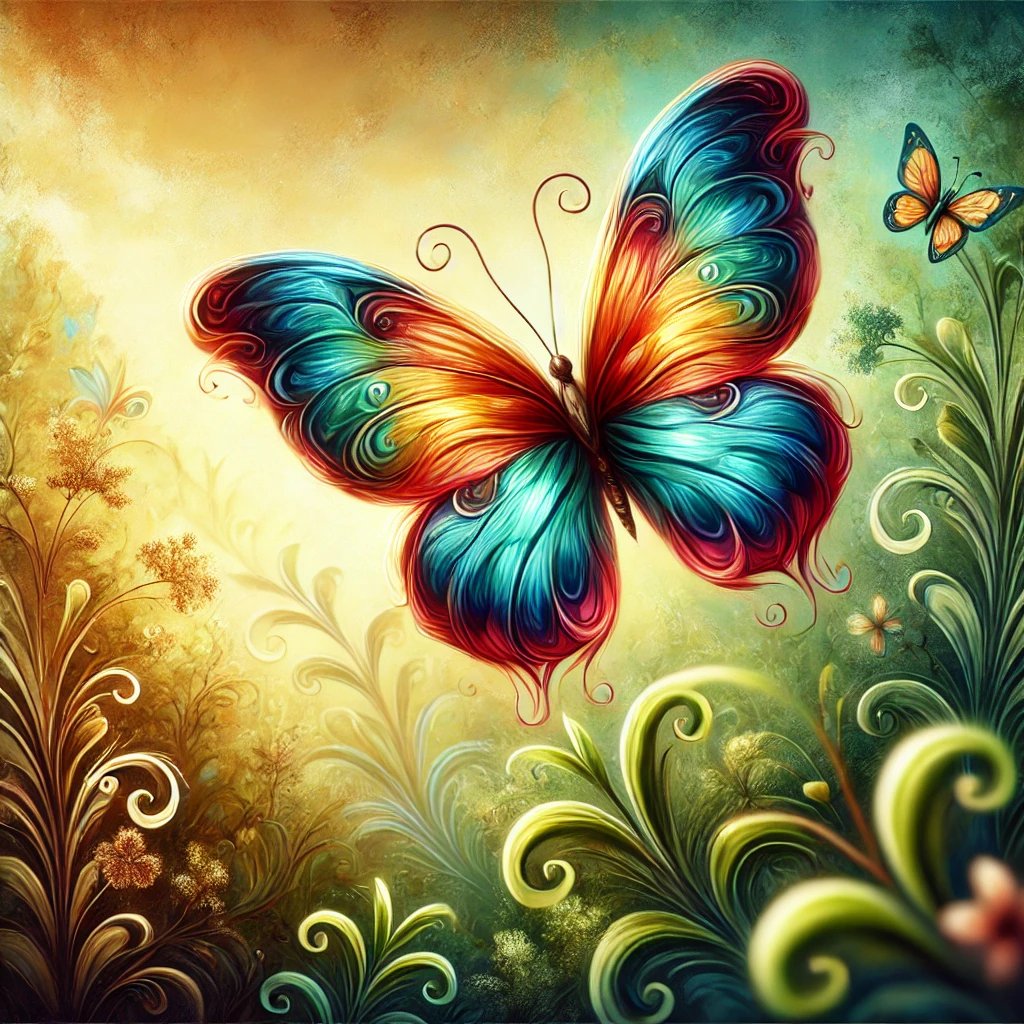What Do Butterflies Represent?
Butterflies captivate people with their beauty, graceful flight, and vibrant colors. Across cultures and generations, butterflies have carried profound symbolic meanings, inspiring people to see them as signs of transformation, hope, and personal growth. In this article, we explore what butterflies represent, their symbolism in various cultures, and their spiritual significance. By understanding these meanings, you may find a new perspective on the butterflies you encounter, whether in nature or through art and literature.
1. Transformation and Change
People view butterflies as symbols of transformation due to their unique life cycle. A butterfly begins as a caterpillar, undergoes a period of profound change within a chrysalis, and finally emerges as a delicate, colorful creature. This transformation mirrors personal growth, where individuals undergo challenges and changes to become a more complete version of themselves. Many people associate butterflies with major life changes, such as moving to a new place, starting a new job, or beginning a relationship, seeing the butterfly as a reminder that beauty often follows periods of growth and adaptation.
2. Hope and Resilience
Butterflies also symbolize hope and resilience. Their delicate appearance contrasts with the strength required to complete metamorphosis, inspiring people to see butterflies as reminders of inner strength. People experiencing hardship may find comfort in the sight of a butterfly, interpreting it as a message of hope that they, too, can overcome obstacles. The butterfly’s ability to thrive despite its fragility reminds us that resilience and beauty coexist, encouraging individuals to hold on to hope during tough times.
3. Freedom and Joy
The sight of a butterfly often evokes feelings of freedom and joy. Butterflies flutter gracefully from flower to flower, embodying a carefree spirit and the ability to embrace life fully. People view butterflies as representations of the freedom to explore, experience, and enjoy life’s beauty. The butterfly’s light, seemingly effortless flight inspires people to seek joy in their journey and embrace each moment.
4. Spiritual and Cultural Significance
Butterflies hold deep meaning in many spiritual practices and cultural traditions. Here’s how different cultures view butterflies:
- In Christianity: Christians often see butterflies as symbols of resurrection and eternal life. The process of transformation from caterpillar to butterfly mirrors the Christian belief in rebirth and salvation. People often view butterflies as symbols of Jesus’s resurrection, especially during Easter.
- In Japanese Culture: The Japanese view butterflies as symbols of the soul. Some believe butterflies carry the spirits of deceased loved ones, allowing them to reconnect with the living. For this reason, people in Japan often interpret the appearance of a butterfly as a visit from a departed loved one, symbolizing their ongoing presence in life.
- In Indigenous Cultures: Many Indigenous cultures in North America associate butterflies with dreams and spiritual messages. Some believe butterflies carry dreams to people, connecting them with spiritual guidance. For example, the Blackfoot tribe believes that butterflies bring restful sleep and pleasant dreams to children.
- In Ancient Greece: Greeks associated butterflies with the soul and psyche. In fact, the Greek word for butterfly, “psyche,” also means “soul.” They believed butterflies represented the journey of the soul, with each stage of a butterfly’s life symbolizing different stages of human life.
5. Love and Relationships
People also associate butterflies with love and relationships. Because butterflies symbolize transformation, they represent the growth and change that relationships often require. Many people view butterflies as a sign of new beginnings or positive shifts in a romantic partnership, whether a new relationship is blooming or a long-term one is deepening. In some cultures, seeing two butterflies together symbolizes harmonious relationships and love. Couples may even see butterflies as symbols of fidelity, believing that a butterfly signifies love that endures challenges.
6. Personal Development and Self-Discovery
The butterfly’s journey resonates with people on a personal level, representing self-discovery and the courage to change. People who embark on journeys of self-growth and healing often resonate with butterfly symbolism, as it reflects their own transformative paths. Whether someone is recovering from a loss, finding their purpose, or exploring a new direction in life, the butterfly embodies the courage to change, move forward, and find beauty in each stage of growth.
7. Butterflies as Spirit Animals
For those who believe in spirit animals, butterflies serve as guides to personal transformation, intuition, and joy. People who feel a special connection to butterflies may believe that this spirit animal encourages them to embrace change and remain open to new experiences. When a butterfly appears during a time of indecision or challenge, some interpret it as a reminder to trust the process and stay hopeful.
Individuals drawn to the butterfly spirit animal often have a desire for self-expression and freedom. They may seek to break free from routines, old habits, or limiting beliefs, pursuing personal growth with curiosity and an open heart. Butterflies as spirit animals guide people toward a more joyful, authentic life, encouraging them to let go of fears and explore the world with wonder.
8. Butterflies in Literature and Art
Butterflies frequently appear in literature and art, representing freedom, beauty, and ephemerality. Writers, poets, and artists have long used butterflies as metaphors for fleeting beauty, the transient nature of life, and the desire for liberation. In literature, butterflies often symbolize hope, change, and rebirth. For instance, in The Metamorphosis by Franz Kafka, the transformation metaphor captures themes of identity and isolation.
Artists also use butterflies to capture themes of freedom and change. In many works, butterflies represent the soul or inner self, adding layers of meaning to visual art. People resonate with these representations, as butterflies remind them to seek beauty in change and find joy in personal expression.
9. Environmental Importance and Symbolism
Beyond symbolism, butterflies also play vital roles in ecosystems. As pollinators, butterflies contribute to plant reproduction, which supports the food chain and biodiversity. People who care about environmental preservation often view butterflies as symbols of a balanced ecosystem and the importance of protecting nature. The decline of butterfly populations due to habitat loss and climate change serves as a reminder of the need for environmental conservation.
Frequently Asked Questions about Butterfly Symbolism
- What does it mean if a butterfly lands on you?
People often interpret a butterfly landing on them as a sign of good luck, love, or a message from a departed loved one. Many believe it symbolizes a blessing or encouragement to embrace joy. - Do different butterfly colors have unique meanings?
Yes, people assign various meanings to butterfly colors. For instance, yellow butterflies often symbolize joy, blue butterflies represent spiritual growth, and black butterflies signify change or the unknown. - Can butterflies represent deceased loved ones?
Many cultures believe that butterflies carry the spirits of deceased loved ones. People often interpret a butterfly’s visit as a sign that a departed loved one is near, offering comfort or guidance.
Final Thoughts
Butterflies represent change, resilience, and the beauty of transformation. Their symbolism resonates deeply with people who experience personal growth, find strength in challenges, and seek hope in times of change. When you see a butterfly, remember its journey and consider the messages it might carry for you. Whether you connect with butterflies as symbols of love, freedom, or resilience, they remind us all to embrace transformation and find beauty in every stage of life.






